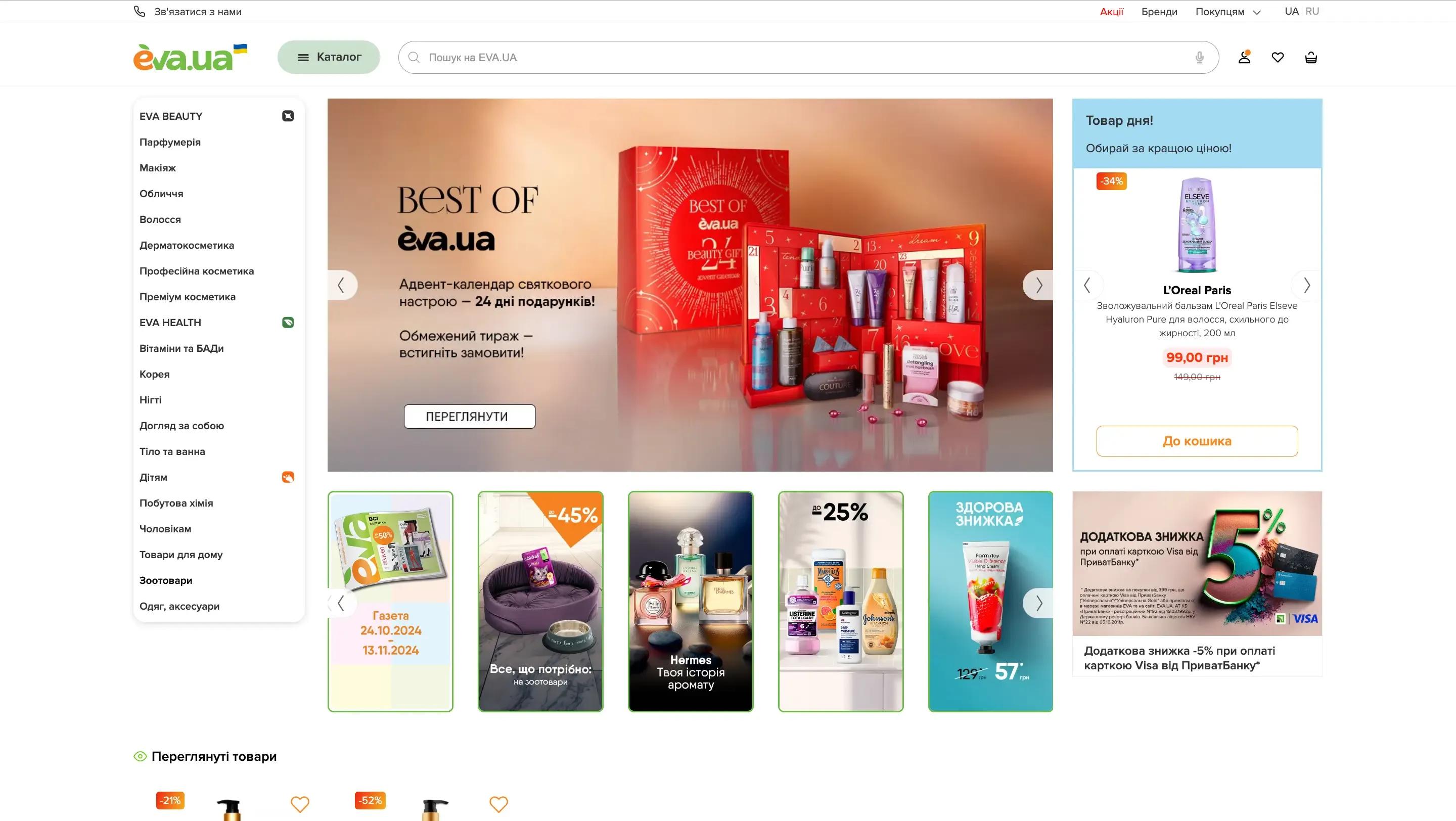Alokai (formerly Vue Storefront): Headless Frontend for Modern eCommerce
Need freedom beyond themes? Alokai (Vue Storefront) gives you a headless storefront, PWA UX, and connectors for Magento, Shopify, BigCommerce, and commercetools—so your frontend evolves without backend lock-in.
2,200+
web stores on Alokai
19,000+
Alokai (Vue Storefront) developers
What is Alokai Storefront (Vue Storefront)?
Alokai’s story began as Vue Storefront, an Open Source project that gave merchants something they had never had before: a way to break free from rigid templates and build their own headless storefront on top of Magento or any other backend. Powered by Vue.js and Nuxt.js, it quickly became the go-to choice for developers who wanted flexibility and speed.
As the community grew, so did the ambition. Vue Storefront evolved into Alokai, a full headless commerce suite. At its heart is the Storefront, now available in two paths:
- The familiar Open Source edition (Vue/Nuxt), free, flexible, and community-driven.
- The Enterprise edition, Composable Storefront, rebuilt on React, with ready-made connectors, middleware, and commercial support for faster rollouts at scale.
From its origins as a scrappy frontend project to today’s enterprise-ready solution, Alokai Storefront remains the bridge between eCommerce platforms and the modern shopping experiences customers expect.
Why Businesses Use Alokai?
Alokai Storefront is chosen by businesses that need a flexible, headless frontend capable of adapting to complex eCommerce ecosystems. It’s designed not only for building beautiful storefronts but also for enabling merchants to integrate systems, expand to new markets, and keep pace with evolving customer expectations.
🎨 Headless Flexibility and UX Freedom
Alokai decouples the frontend from the backend, giving merchants the freedom to design unique shopping experiences without being limited by platform templates. This allows for consistent UX across web, mobile, and omnichannel touchpoints.
⚡ Faster Time-to-Market with Connectors
Thanks to pre-built API connectors and middleware, Alokai reduces the development effort required to launch a headless storefront. For businesses that need to integrate with Magento, Shopify, BigCommerce, or commercetools, this means a quicker path to market.
🛒 Alokai for Magento Merchants
Magento merchants use Alokai to escape the constraints of the Luma frontend and enable true headless commerce. While it demands more resources than theme-based alternatives, it offers future-proof flexibility for complex integrations and custom features.
🔗 Omnichannel Consistency
Alokai supports a single source of truth across channels, ensuring customers enjoy the same experience whether they shop via desktop, mobile, or in-store devices. This makes it a strong option for retailers with omnichannel strategies.
🧩 Technology Independence
Alokai allows merchants to switch to new frontend technologies or third-party systems without disrupting Magento’s backend. This gives businesses strategic flexibility and protects long-term technology investments.
Benefits and Strengths of Alokai
Alokai Storefront sits inside a broader, composable FEaaS stack. Its strengths come from pairing a modern frontend (React or Vue) with an integration layer and a rich ecosystem of modules and connectors.
⚡ Modern performance foundation
Alokai provides a performance-focused path that includes frontend performance optimization as a use case and fast, monitored hosting via Alokai Cloud. It's useful when reliability and observability matter. PWA tactics (mobile-first, app-like UX) are supported across their guidance and blog resources.
🎛 Flexible, decoupled architecture
You can build on React or Vue and keep the customer experience stable while your backend evolves. The Unified Data Layer lets you switch backends without disrupting the frontend, protecting long-term investments.
🧩 Out-of-the-box integrations & modules
Alokai ships with pre-integrations for commerce backends, headless CMS, and search, plus a modules concept to add features (e.g., alternative checkout, quick order) without starting from scratch. It’s also built with Storefront UI (Tailwind-based) to speed up UI work.
🔗 Middleware & API connectivity
The Server Middleware acts as an integration layer between the storefront and services (commerce, CMS, payments), centralizing API calls and custom endpoints, handy for complex stacks.
🛡 Enterprise-grade tooling & operations
For teams that need governance and ops, Alokai adds Cloud and Console to deploy, monitor, and manage storefronts, along with a growing ecosystem and support options.
Limitations of Alokai (Vue Storefront)
Headless brings power but also trade-offs. If you’re weighing Alokai (Vue Storefront) / Composable Storefront against theme-based options (e.g., Hyvä), keep these in mind:
🧩 More moving parts → higher TCO and longer time to market
Storefront, middleware, connectors, hosting, observability, CI/CD. Expect greater engineering and operational cost than a monolithic frontend.
Time-to-market is longer unless you leverage packaged connectors and a disciplined scope.
👥 Skills & team readiness
You’ll need React (Enterprise) or Vue/Nuxt (Open Source) plus GraphQL/REST, API design, caching, and DevOps. Smaller teams may feel the load.
🔌 Integrations aren’t “plug and play”
Prebuilt connectors still require mapping, customization, and regression testing. Plan for version drift when platforms or APIs change.
🚀 Slower path to MVP than monolithic
Compared with Hyvä (Magento) or a platform theme, headless MVPs take longer due to extra layers (API orchestration, middleware, hosting).
🛠 Ongoing maintenance & monitoring
Headless success relies on API health, rate limits, error tracing, and performance SLOs. Budget for continuous tuning (SSR, caching, hydration) rather than “set and forget.”
📈 Performance pitfalls
Headless can be very fast, but it’s not “fast by default.” SSR, caching, and hydration must be engineered correctly; otherwise Core Web Vitals suffer.
If raw Magento storefront speed is your only goal, a lightweight theme approach may be simpler.
⚙️ Operations & Monitoring
More services = more monitoring, error tracing, and incident ownership (edge caching, APIs, auth, rate limits). Budget for continuous tuning rather than “set and forget.”
💸 Enterprise licensing (if chosen)
Composable Storefront adds license cost, trading higher capex/opex for vendor support, governance, and packaged integrations.
When Alokai is a fit and when to reconsider
✅ When it’s a fit
- You need custom UX and omnichannel journeys beyond what themes allow.
- You run (or plan to run) multiple backends/regions/brands and want technology independence for future migrations.
- You have (or will hire) a product + engineering team comfortable with React/Vue and APIs.
- You value governance, observability, and controlled rollouts over the shortest build.
- You’re an enterprise or mid-large merchant, prioritizing UX innovation and long-term scalability.
❌ When to reconsider
- Single-market, simple catalog, tight timeline/budget, and minimal custom flows.
- Your priority is the fastest time-to-value on Magento with minimal engineering then a theme-based approach (e.g., Hyvä) may be a better fit.
Not sure where you land? We can review your stack and give a vendor-neutral recommendation. → Alokai (Vue Storefront) Development Services.
Alokai Ecosystem
Alokai isn’t just a storefront it’s a composable stack with building blocks you can mix and match without locking your backend.
🧩 Connectors & Middleware
Pre-built connectors link the storefront to commerce platforms (Magento/Adobe Commerce, Shopify, BigCommerce, commercetools). A lightweight middleware layer centralizes API calls, auth, caching, and custom endpoints. It's useful when you’re orchestrating several services at once.
🧱 Storefront UI & Feature Modules
Storefront UI provides a reusable, themeable component library (design tokens, accessibility patterns, Tailwind-friendly). On top, modules (e.g., alternative checkout flows, quick order, search integrations) speed up delivery so teams don’t start from scratch.
🔗 Third-Party Integrations
Alokai plays well with your stack: headless CMS, site search, payments, analytics, CDPs, and personalization tools. You can use packaged integrations where available, or wire custom services through the middleware and a unified API model.
🔁 Multi-backend, Migration-friendly
Because the frontend is decoupled, you can switch or add backends (replatform, merge brands, launch in new regions) with minimal disruption to the customer experience.
👥 Community + Commercial Support
There’s an active Open Source community (plugins, examples, patterns) and Enterprise backing (SLAs, security reviews, roadmap, cloud/console tooling). Pick the path that fits your governance and risk profile.
Our Alokai / Vue Storefront services
We’ve worked with Vue Storefront / Alokai since its earliest versions, and have delivered headless Magento builds for retailers like Eva.ua (130,000 SKUs online) and Varus (21,900 SKUs online), where flexibility, integrations, and steady operations mattered most.
Our Alokai / Vue Storefront services include:
- Discovery & fit assessment (vendor-neutral), roadmap, and TCO estimates
- Thin-slice PoC (e.g., Home → PDP → Checkout) with performance SLOs
- Architecture & solution design (headless, data flows, security)
- Storefront build: Enterprise (React) or Open Source (Vue/Nuxt)
- Storefront UI setup, tokens, accessibility, and design-system governance
- Connectors & middleware: Magento/Adobe Commerce, Shopify, BigCommerce, commercetools; CMS (e.g., Contentful/Storyblok); search (Algolia/Elastic); payments (Adyen/Stripe/Mollie)
- SSR, edge caching, hydration strategy and Core Web Vitals tuning
- SEO foundations (routing, metadata, structured data)
- Analytics & consent: tagging plan, events, CDP integration
- QA automation, contract tests for APIs, regression pipelines
- CI/CD, environments, observability (logs, traces, alerts), runbooks
- Migration/replatforming while preserving the frontend experience
- Team enablement: co-development, docs, workshops, handover
- Ongoing support & maintenance
Want to explore if Alokai fits your business? → See our Alokai (Vue Storefront) Development Services.
Content
Alokai (Vue Storefront) Case Studies

Eva.ua
Eva.ua is the leading Ukrainian drogerie retail chain, with 1,100 offline stores, over 130,000 SKUs available online, and an impressive influx of 40,000 orders during Black Friday in 2024. Eva.ua began its eCommerce journey using a monolithic Magento system and later transitioned to a Headless PWA solution, incorporating rich custom features, marketplace capabilities, and omnichannel functionality. It’s a great example of when a business truly needs to go headless and how it can utilize its full capacity

Varus
When Varus, one of Ukraine’s leading grocery chains, set out to modernize their eCommerce, they needed more than just a facelift they needed flexibility, speed, and scale. By going headless with Magento + Vue Storefront, we delivered a custom PWA with deep system integrations and Dark Store support. The result? 800% growth in orders and a future-proof platform built for rapid innovation.